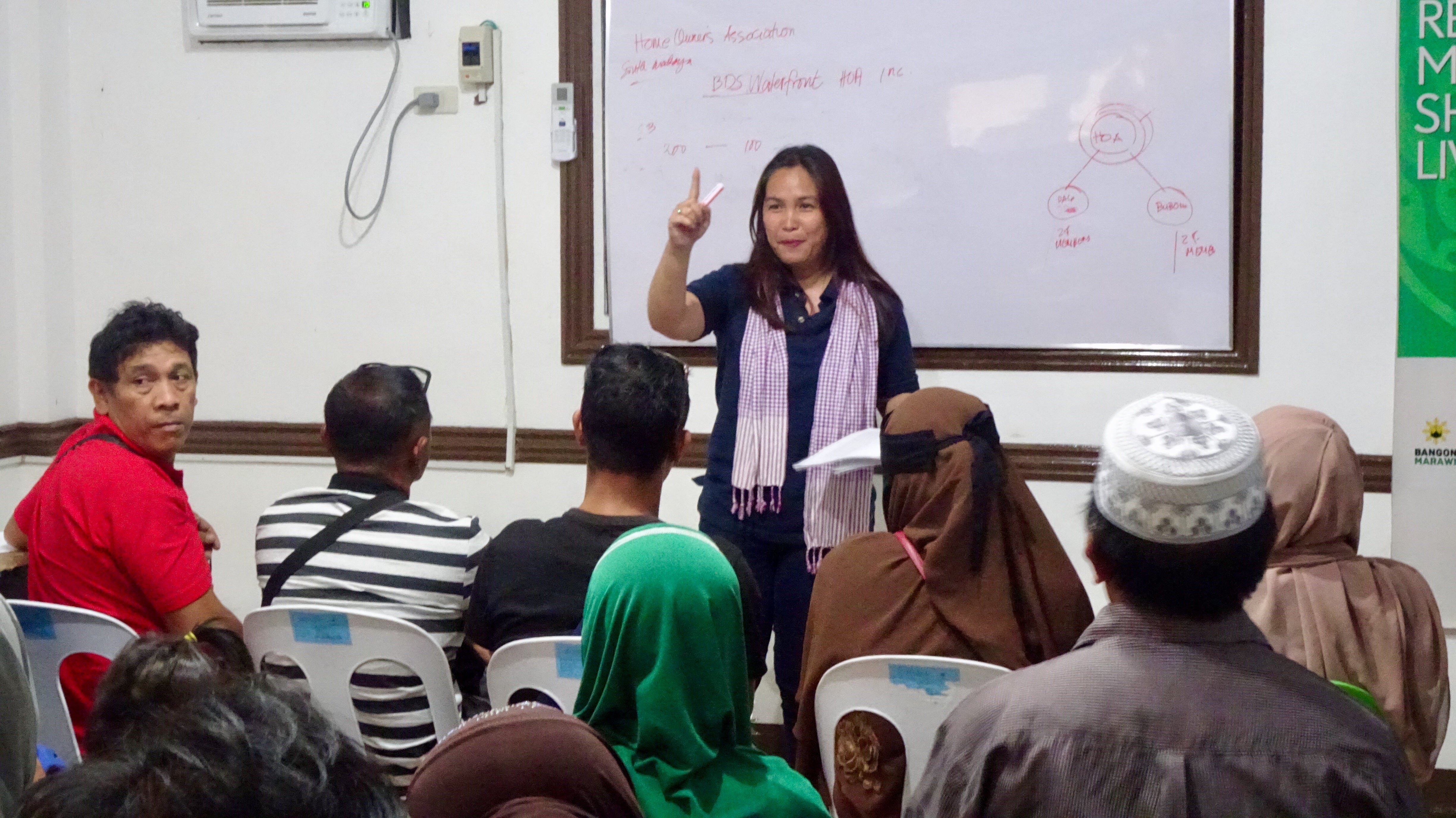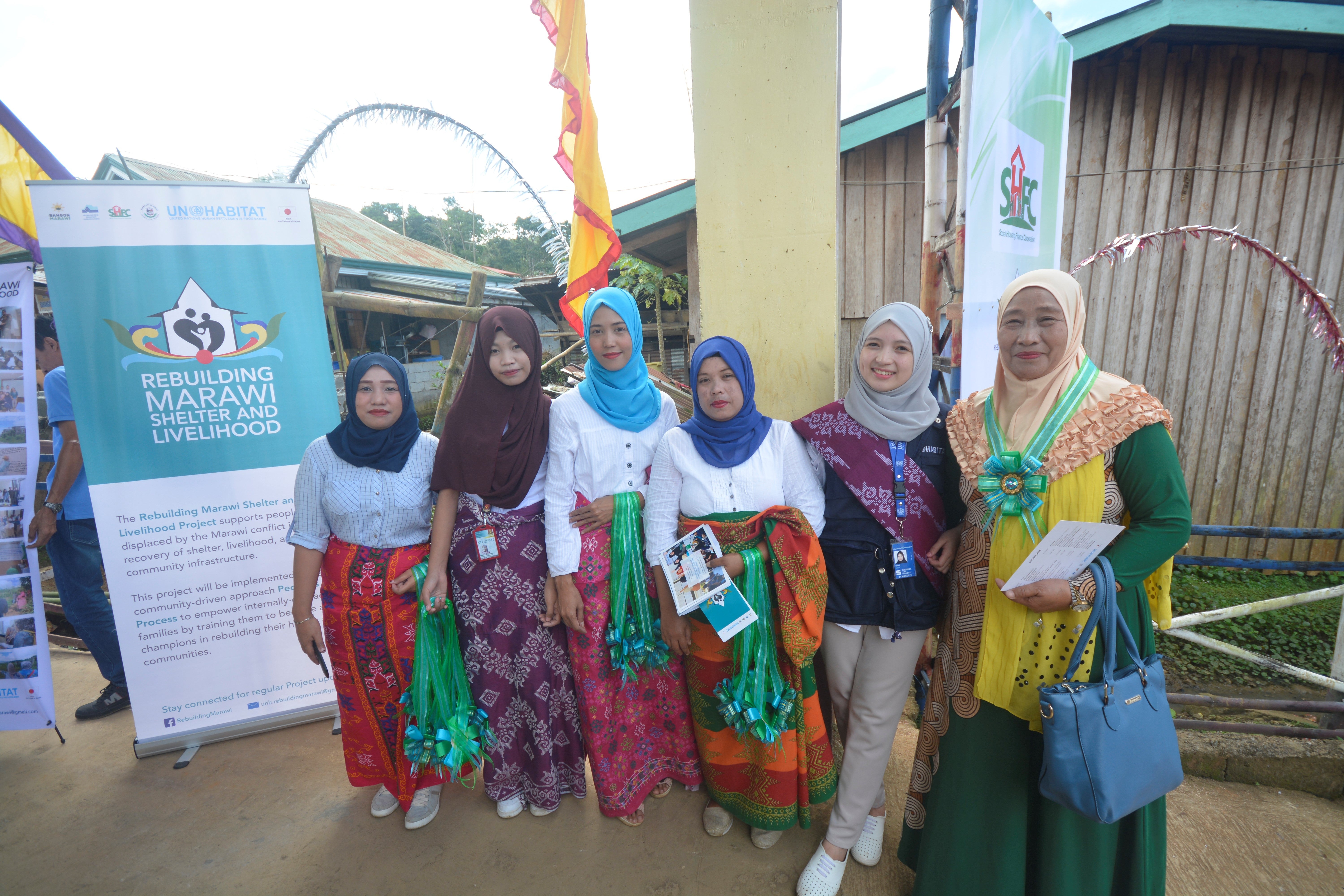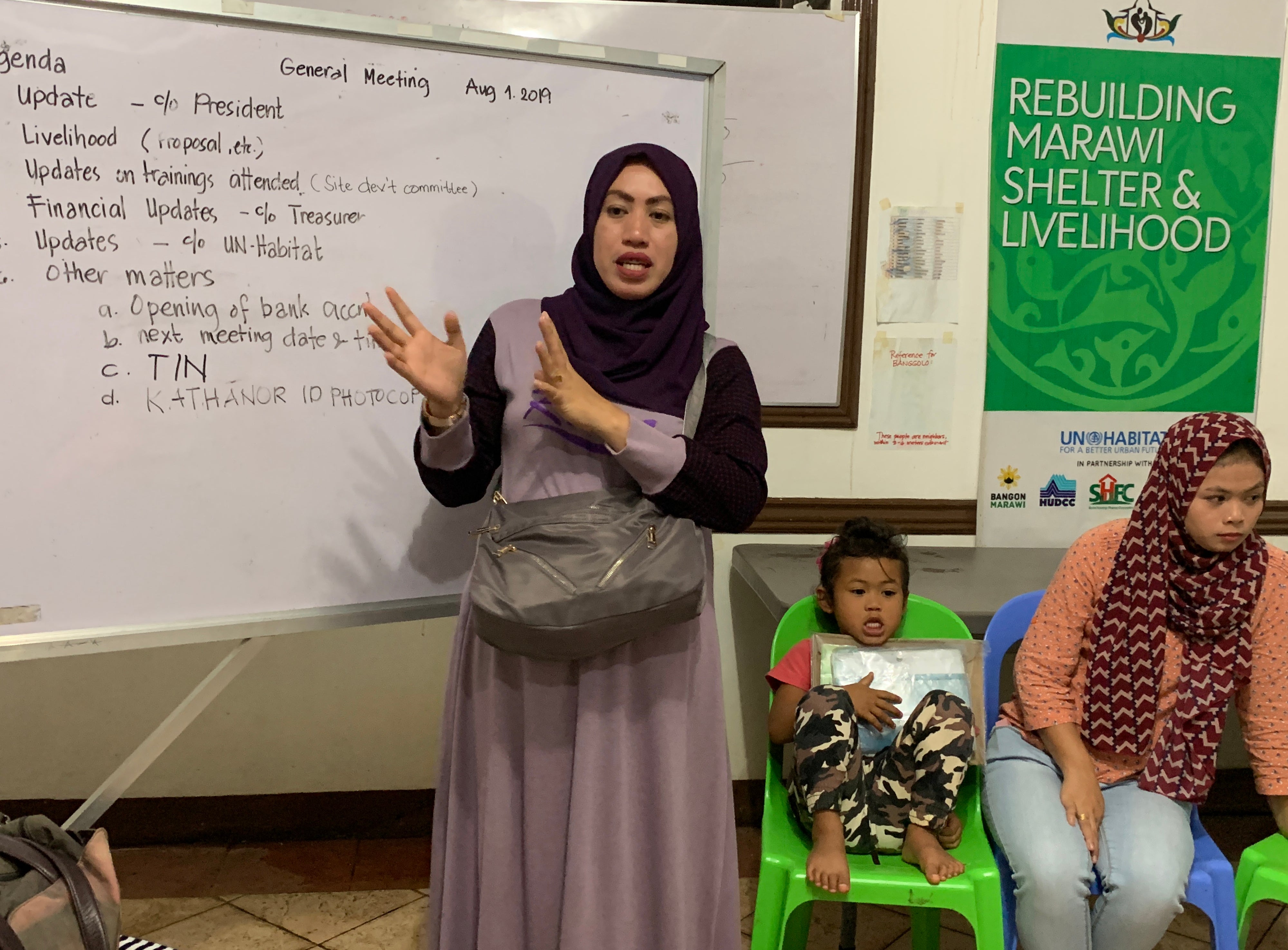19 August 2019, Makati City, Philippines – In the Philippines over 40 per cent of humanitarian workers are women and they were honoured during this year’s World Humanitarian Day, which focused on the work of women in crisis situations and female aid workers.
“Today is a particularly special day,” said Kristin Dadey, UN Resident Coordinator/Humanitarian Coordinator, a.i. in her welcome statement at the World Humanitarian Day event. “We honour and pay particular attention to the female humanitarian workers by raising awareness and support for women who are often the unsung heroes of the frontlines. Women’s role in humanitarian leadership is critical, evidence shows that when women are part of the decision-making process, it is a better or effective response.”
Three women work with the Japan-supported “Rebuilding Marawi Shelter and Livelihood” project implemented by UN-Habitat which aims to provide 1,500 new homes and 10 community infrastructure projects in Marawi in southern Philippines. The project supports those who lost everything in 2017 during a five-month conflict between government forces and militants, which led to destruction of the city and displacement.
The city is slowly being rebuilt, and these three women, in varying roles, work together to help communities recover and thrive.

Community mobilizer Charlyn Pendang, has grown accustomed to the rapid demands of emergency response. With a daily routine comprised of lodging security clearances, back to back meetings, and phone calls that reach well into the night. “Cha” as her friends fondly call her, has worked in the humanitarian field for eight years.
“Growing up in an impoverished family, I’ve always had a soft heart for those in need,” Cha shares. “I remember, whenever I had a classmate who needed help with something, I go out of my way and help them within my capacity. In this way, I was able to gain friends.”
As a community mobilizer for the "Rebuilding Marawi Shelter and Livelihood" project, she spends most of her time organizing displaced families into registered homeowner associations that take advantage of government loans and specialized land access and making sure that rehabilitation efforts are participatory and led by the communities themselves.
Cha has gained the trust of affected Maranao, people indigenous to Marawi, and is closely working with 28 families in construction management, financial management, and community contracting among many other types of training under the project.
For community member Abdul Jalil Madid, Cha’s presence gives them a sense of security: “We know we are in the right hands. Aside from giving us guidance on how to do things, she attends to every concern of the members.”
A mother of three, Cha says she sees herself in the women and mothers from affected communities who still find time to attend various project meetings on top of their household responsibilities. “Every day more and more women are participating in the " Rebuilding Marawi Shelter and Livelihood" project implementation and I find it particularly inspiring that there are women and mothers who are vocal and active in public forums,” she added.
Through Cha’s mobilization efforts, women have found a safe space for their voices to be heard.

As a community mobilizer for the project, and one of those displaced by the conflict, Rohma Gato Omar, 23, acts as liaison between the project’s targeted displaced communities and the project implementing team.
She has helped displaced groups to prepare the requirements needed to be eligible to receive new homes and has developed systems by which community members affected by the violence can engage with and benefit from the project’s other interventions.
“Being a community worker is exciting but quite challenging” Rohma says. “I feel some pressure when I can’t meet everyone’s needs. It takes a lot of conversations to make them understand that the project takes time and that we in the project team are doing the best that we can.”
In the office, Rohma quietly observes and learns about the technical and normative aspects of her job. In the field, however, she is in her element: strong, outspoken and self-assured. “When it comes to community work specifically in a place where youth and women aren’t usually heard, I’m more comfortable and confident despite my youth and gender – which in fact become my motivation to speak,” she says
“The internally displaced people are my fellows and I understand their loss and agony. That’s why working in this project is especially fulfilling for me, when I see how it gives people hope and the strength to rise and build a new and better future for their families and communities.”

Norhaifa Patarandang, 33, was already engaged in development work for a local non-governmental organization when she met her husband and moved to Marawi. Nothing prepared her for the violence or the time she and her family spent moving from town to town after losing their home. It was seeing the plight of her children in the cramped room they rented that gave her the motivation to play an active role in the Rebuilding Marawi project and agree when her community asked her to be community leader.
While Charlyn and Rohma are part of the UN-Habitat team, Norhaifa is one of the internally displaced and a target beneficiary of the project. She records the minutes of all meetings and gives out notices to all members. But what she finds as the most rewarding part of her duty is the empowerment the project provides and the opportunity it gives to Muslim women to speak their minds.
“In one of our consultation meetings, I was very pleased that the project engineers considered my concern on the construction of toilets [in the permanent shelters],” she says. “Even before the siege, most of the affected families didn’t have proper toilets. It was very tedious then for mothers like me to fill buckets of water from faucets outside our houses. I told the engineers to ensure that there were toilets inside the house and so they included that in their plans. That made us very happy.”
Since then, Norhaifa has been very vocal in meetings and trainings, speaking her mind to the committees. As a community leader, Norhaifa is breaking the conventional role of “beneficiary” and inspiring other women in the community to speak up, be part of the conversation and decision making, and be architects in the design of their own recovery and rehabilitation.
Authors: Jenina Alli and Keneath Bolisay
Photographers: Jerecho Placido, Jomari Guillermo, Jomari Guillermo, Kent Bolisay